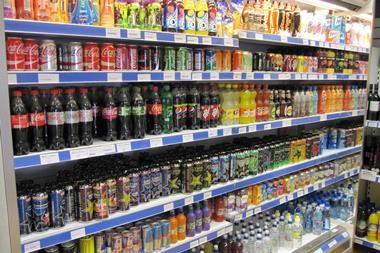The food price pressure cooker is being stoked with record amounts of speculative cash as financial players move to make a killing in commodities. Add poor harvests and soaring demand to the entry and exit of speculators’ money and the markets are fit to burst. Michael Kapoor reports
When food prices rocket, people starve. This was the warning from NGO the World Development Movement as food prices surged this year. And the outlook for 2011 is bleak. Just last week the United Nations Food and Agriculture Organisation (UNFAO) warned that food prices will continue to soar into 2011 as, in particular, global cereal stocks plunge in coming months.
There are straightforward reasons for this. Weak harvests have collided head-on with exploding demand from emerging markets. And the UNFAO says global food production must increase if food price inflation is not to worsen.
But there is another factor driving prices up and fuelling uncertainty in commodity markets the financial investors growing fat on food commodity speculation.
Take sugar, which until earlier this month was at a 30-year high. The assumption is, ordinarily, that supply and demand are out of whack. On 12 and 13 November, prices plunged 23.5% as investors pulled out speculative cash after India, the world's number-two sugar producer, said it could export more than previously expected and the EU authorised further exports.
It's happening elsewhere. This month in the soybean market speculators have bought record amounts, driving their share of global stocks past the 20% mark for the first time in history. And most have heard about 'Choc Finger', aka Anthony Ward, who cornered a huge chunk of the world's cocoa bean supply this year.
The risk of further turmoil fuelled by speculators pulling their cash from over-heated markets fast looms large, reigniting debate over the impact of financial investors on agricultural markets. And, of course, it's not just developing nations that these chancers are affecting: in the UK the health and viability of suppliers is dependent on making calls amid the most volatile conditions imaginable.
So what does the flow of hot speculative cash into food commodities mean for future market predictability? And can anything be done to stop it?
In the past year wheat and maize have both climbed by more than 30%; meat is at a 20-year high with lamb at a 37-year record; and cocoa is at its highest price in 33 years.
This year's explosion in food prices is the second in three years. The previous, in 2007-08, was followed by an equally spectacular crash as speculators rushed to withdraw their cash from over-inflated markets. Then and now, there is growing concern that the amount of money flowing in to commodity exchanges is way out of proportion to their size. In short, too much money is chasing too few goods, forcing prices unrealistically high.
"Commodity prices are driven by financial investors these days, not by industrial ones," says Niels Jensen, a fund manager at Absolute Return Partners in London. "Food exchanges in particular are often very small compared with the size of financial markets like equities."
To see the influence of external investors, you only need look at wheat. The markets panicked when Russia, the world's third-largest exporter, cancelled all shipments after this summer's droughts destroyed the country's harvest, sending prices into the stratosphere. "It was an over-reaction," says Adam Prakash, an economist at the UNFAO in Italy, pointing out that Russia actually accounts for less than 10% of global exports.
An inevitable ascent in prices caused by the poor harvest was then exaggerated by financial speculators. "They exacerbate existing trends, they do not create them," adds David Eudall, an analyst at the HGCA. In other words, it was not the financial investors who forced prices up, it was the shortage of wheat for sale. But the influx of hot money expecting a price increase could certainly explain the extent of the price explosion.
A poor maize harvest in the US (which accounts for a third of global production) caused a similar price spiral. In meat, beef and pork producers in developed countries such as the US and UK slashed production as local demand fell with the recession. That clashed with exploding demand in fast-growing emerging markets (see box). Add on surging feed costs and prices were bound to rise. But that doesn't explain why beef and lamb have both hit historic highs. Again, the surge in prices is out of proportion to the perfectly valid economic causes.
Financial investors have been buying food commodities en masse since the key US market was liberalised in the 1990s. This was a reversal of 1930s reforms banning anyone but industrial investors from speculating on food prices. But the interest has risen exponentially since the recession began.
Jensen says speculators are split more or less evenly between retail investors and big pension funds. But since the financial crisis, he adds, pension fund involvement in commodities has soared as funds look for new opportunities.
The numbers are already staggering. "Typically, they're allocating about 5% of their portfolios to commodities," says Jensen. Funds buying commodities tend to be giant banks such as HSBC and Barclays, rather than companies' occupational pension schemes. Their involvement is enough to distort markets considerably. Globally, pension funds manage assets worth $30 trillion. If they allocate 5% of that amount to commodities, some $1.5 trillion would flow into commodities. To put that in perspective, the total global wheat market is worth less than £700m a year, according to the HGCA.
But the greatest source of controversy is the investment banks' development of instruments that allow ordinary Joe Punters to buy easily into food. The World Development Movement claims Goldman Sachs made profits of more than $1bn last year "from speculating on food". The American bank angrily dismisses the claim. But while the murkiness of this market makes it hard to name the biggest players, all the big investment banks are active, along with hedge funds and other specialists.
Investment banks such as Barclays Capital have been aggressively launching Exchange Traded Funds (ETFs) tradable instruments that often mirror the performance of a certain exchange or index. These open up commodity investment to ordinary investors, rather than industrial giants or dedicated fund managers. "It allows less sophisticated investors on to the exchanges," explains Jensen.
ETF programmes were worth $92bn at the end of last year [Barclays Capital/FT], close to the $111bn invested in the Index Linked Programmes preferred by pension funds. And the sector is growing very fast. Deutsche Bank says 66 commodity ETFs were launched in 2009. In March alone, UBS launched 69 exchange rate commodities on the London Stock Exchange.
In the previous two months, Barclays Capital, Deutsche Bank, Julius Baer, UBS and Amundi (formed by a merger of the asset management arms of Société Générale and Crédit Agricole) launched 45 exchange traded products (ETPs, really just another term for ETFs). Deutsche puts the growth in assets under management in European commodity ETPs at 145% to 21.2bn last year, with growth of 60% to 90% expected this year.
The amount of cash hitting commodity exchanges is not just distorting food markets. Everything from gold to oil has hit record highs in the past year or two, and analysis has found a clear correlation between the amount of passive, or financial investor, money on the exchanges and the price of, for example, oil. The bigger fear is over the volatility this fast-moving cash can cause when speculators flee as prices threaten to tumble. It's already happened with sugar, and many fear further crashes.
Calls are therefore growing for regulation to be stepped up to deter the speculators. The US did impose greater transparency on over-the-counter commodities trading (such as ETFs) last year as part of wider financial reform. But it is still debating deeper changes. So is the EU, which has done little so far but says it will tighten regulation. President Sarkozy has also promised to use his stint as head of the G20 to crack down on food price speculation.
The jury is still out on how far the regulatory screws will or can be turned, but most expect to see greater transparency in the murky world of commodities speculation in the future, with requirements for more detailed reporting to be introduced so it is clearer who is buying what, and when.
The introduction of caps on the amounts investors can buy is another possibility, but there's little talk of trying to ban the financial speculators from the market altogether. "They play an important role," admits the UNFAO's Prakash. "The markets need them for liquidity."
In the meantime the number of mouths to feed in the world heads skywards. The heat is on.
The meat of the matter
Few question that food is in short supply today. But production should increase sufficiently next year to make up the shortfall.
Take a look at meat and it's clear both that prices are likely to go up longer term and that today's crazy prices are probably not sustainable. Global meat prices are at their highest level for 20 years, with lamb at a 37-year high, beef a two-year high and pork and poultry surging in value, too.
The reason, of course, is that meat consumption is growing fast as emerging markets grow richer, with the International Food Policy Research Institute saying that developing countries' appetite for meat will grow by two-thirds between now and 2050. In China alone, meat consumption surged by 20% last year.
That, inevitably, is pushing prices higher as the big meat exporters like Australia and the US cut production in reaction to recession at home: Americans slaughtered 7% fewer pigs last year, while Australia's sheep flock has halved in size over the past 20 years.
So, for meat, there are straightforward reasons for recent price increases, and realistic expectations that there will be a tumble next year as production increases again. Look at the main food crops and supply-demand mismatches will also lead to shorter-term price fluctuations, doubtless exacerbated by the financial speculators.
The Economist Intelligence Unit expects sharp corrections to this year's boom prices, in an echo of the crash that followed the boom of 2007-08. Partly, this is down to supply catching up with demand as the market recovers from poor harvests this year and farmers produce more in response to higher prices.
But there is also a trend towards violent price swings for some crops such as wheat that reflect the rapid entry and exit of hot money.
When food prices rocket, people starve. This was the warning from NGO the World Development Movement as food prices surged this year. And the outlook for 2011 is bleak. Just last week the United Nations Food and Agriculture Organisation (UNFAO) warned that food prices will continue to soar into 2011 as, in particular, global cereal stocks plunge in coming months.
There are straightforward reasons for this. Weak harvests have collided head-on with exploding demand from emerging markets. And the UNFAO says global food production must increase if food price inflation is not to worsen.
But there is another factor driving prices up and fuelling uncertainty in commodity markets the financial investors growing fat on food commodity speculation.
Take sugar, which until earlier this month was at a 30-year high. The assumption is, ordinarily, that supply and demand are out of whack. On 12 and 13 November, prices plunged 23.5% as investors pulled out speculative cash after India, the world's number-two sugar producer, said it could export more than previously expected and the EU authorised further exports.
It's happening elsewhere. This month in the soybean market speculators have bought record amounts, driving their share of global stocks past the 20% mark for the first time in history. And most have heard about 'Choc Finger', aka Anthony Ward, who cornered a huge chunk of the world's cocoa bean supply this year.
The risk of further turmoil fuelled by speculators pulling their cash from over-heated markets fast looms large, reigniting debate over the impact of financial investors on agricultural markets. And, of course, it's not just developing nations that these chancers are affecting: in the UK the health and viability of suppliers is dependent on making calls amid the most volatile conditions imaginable.
So what does the flow of hot speculative cash into food commodities mean for future market predictability? And can anything be done to stop it?
In the past year wheat and maize have both climbed by more than 30%; meat is at a 20-year high with lamb at a 37-year record; and cocoa is at its highest price in 33 years.
This year's explosion in food prices is the second in three years. The previous, in 2007-08, was followed by an equally spectacular crash as speculators rushed to withdraw their cash from over-inflated markets. Then and now, there is growing concern that the amount of money flowing in to commodity exchanges is way out of proportion to their size. In short, too much money is chasing too few goods, forcing prices unrealistically high.
"Commodity prices are driven by financial investors these days, not by industrial ones," says Niels Jensen, a fund manager at Absolute Return Partners in London. "Food exchanges in particular are often very small compared with the size of financial markets like equities."
To see the influence of external investors, you only need look at wheat. The markets panicked when Russia, the world's third-largest exporter, cancelled all shipments after this summer's droughts destroyed the country's harvest, sending prices into the stratosphere. "It was an over-reaction," says Adam Prakash, an economist at the UNFAO in Italy, pointing out that Russia actually accounts for less than 10% of global exports.
An inevitable ascent in prices caused by the poor harvest was then exaggerated by financial speculators. "They exacerbate existing trends, they do not create them," adds David Eudall, an analyst at the HGCA. In other words, it was not the financial investors who forced prices up, it was the shortage of wheat for sale. But the influx of hot money expecting a price increase could certainly explain the extent of the price explosion.
A poor maize harvest in the US (which accounts for a third of global production) caused a similar price spiral. In meat, beef and pork producers in developed countries such as the US and UK slashed production as local demand fell with the recession. That clashed with exploding demand in fast-growing emerging markets (see box). Add on surging feed costs and prices were bound to rise. But that doesn't explain why beef and lamb have both hit historic highs. Again, the surge in prices is out of proportion to the perfectly valid economic causes.
Financial investors have been buying food commodities en masse since the key US market was liberalised in the 1990s. This was a reversal of 1930s reforms banning anyone but industrial investors from speculating on food prices. But the interest has risen exponentially since the recession began.
Jensen says speculators are split more or less evenly between retail investors and big pension funds. But since the financial crisis, he adds, pension fund involvement in commodities has soared as funds look for new opportunities.
The numbers are already staggering. "Typically, they're allocating about 5% of their portfolios to commodities," says Jensen. Funds buying commodities tend to be giant banks such as HSBC and Barclays, rather than companies' occupational pension schemes. Their involvement is enough to distort markets considerably. Globally, pension funds manage assets worth $30 trillion. If they allocate 5% of that amount to commodities, some $1.5 trillion would flow into commodities. To put that in perspective, the total global wheat market is worth less than £700m a year, according to the HGCA.
But the greatest source of controversy is the investment banks' development of instruments that allow ordinary Joe Punters to buy easily into food. The World Development Movement claims Goldman Sachs made profits of more than $1bn last year "from speculating on food". The American bank angrily dismisses the claim. But while the murkiness of this market makes it hard to name the biggest players, all the big investment banks are active, along with hedge funds and other specialists.
Investment banks such as Barclays Capital have been aggressively launching Exchange Traded Funds (ETFs) tradable instruments that often mirror the performance of a certain exchange or index. These open up commodity investment to ordinary investors, rather than industrial giants or dedicated fund managers. "It allows less sophisticated investors on to the exchanges," explains Jensen.
ETF programmes were worth $92bn at the end of last year [Barclays Capital/FT], close to the $111bn invested in the Index Linked Programmes preferred by pension funds. And the sector is growing very fast. Deutsche Bank says 66 commodity ETFs were launched in 2009. In March alone, UBS launched 69 exchange rate commodities on the London Stock Exchange.
In the previous two months, Barclays Capital, Deutsche Bank, Julius Baer, UBS and Amundi (formed by a merger of the asset management arms of Société Générale and Crédit Agricole) launched 45 exchange traded products (ETPs, really just another term for ETFs). Deutsche puts the growth in assets under management in European commodity ETPs at 145% to 21.2bn last year, with growth of 60% to 90% expected this year.
The amount of cash hitting commodity exchanges is not just distorting food markets. Everything from gold to oil has hit record highs in the past year or two, and analysis has found a clear correlation between the amount of passive, or financial investor, money on the exchanges and the price of, for example, oil. The bigger fear is over the volatility this fast-moving cash can cause when speculators flee as prices threaten to tumble. It's already happened with sugar, and many fear further crashes.
Calls are therefore growing for regulation to be stepped up to deter the speculators. The US did impose greater transparency on over-the-counter commodities trading (such as ETFs) last year as part of wider financial reform. But it is still debating deeper changes. So is the EU, which has done little so far but says it will tighten regulation. President Sarkozy has also promised to use his stint as head of the G20 to crack down on food price speculation.
The jury is still out on how far the regulatory screws will or can be turned, but most expect to see greater transparency in the murky world of commodities speculation in the future, with requirements for more detailed reporting to be introduced so it is clearer who is buying what, and when.
The introduction of caps on the amounts investors can buy is another possibility, but there's little talk of trying to ban the financial speculators from the market altogether. "They play an important role," admits the UNFAO's Prakash. "The markets need them for liquidity."
In the meantime the number of mouths to feed in the world heads skywards. The heat is on.
The meat of the matter
Few question that food is in short supply today. But production should increase sufficiently next year to make up the shortfall.
Take a look at meat and it's clear both that prices are likely to go up longer term and that today's crazy prices are probably not sustainable. Global meat prices are at their highest level for 20 years, with lamb at a 37-year high, beef a two-year high and pork and poultry surging in value, too.
The reason, of course, is that meat consumption is growing fast as emerging markets grow richer, with the International Food Policy Research Institute saying that developing countries' appetite for meat will grow by two-thirds between now and 2050. In China alone, meat consumption surged by 20% last year.
That, inevitably, is pushing prices higher as the big meat exporters like Australia and the US cut production in reaction to recession at home: Americans slaughtered 7% fewer pigs last year, while Australia's sheep flock has halved in size over the past 20 years.
So, for meat, there are straightforward reasons for recent price increases, and realistic expectations that there will be a tumble next year as production increases again. Look at the main food crops and supply-demand mismatches will also lead to shorter-term price fluctuations, doubtless exacerbated by the financial speculators.
The Economist Intelligence Unit expects sharp corrections to this year's boom prices, in an echo of the crash that followed the boom of 2007-08. Partly, this is down to supply catching up with demand as the market recovers from poor harvests this year and farmers produce more in response to higher prices.
But there is also a trend towards violent price swings for some crops such as wheat that reflect the rapid entry and exit of hot money.

















No comments yet